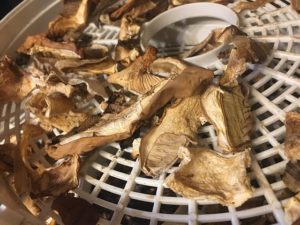General Information
- Copper is an essential trace mineral and, after iron and zinc, the third most common mineral in the human body.
- Almost half of the body’s copper is stored in the muscles, a fifth in the skeleton.
- Many foods contain copper, so deficiency is very rare.
- A risk of copper deficiency occurs for individuals with mineral absorption disorders (e.g., with intestinal diseases) or due to prolonged, excessive zinc intake (> 50 mg/day).
- Copper and iron metabolism are closely linked.
Why Do We Need Copper?
- Copper plays an important role in iron metabolism, including iron absorption in the intestine and the formation of red blood cells (erythrocytes)
- Antioxidant effect
- Important for energy metabolism
- Important for collagen synthesis and crosslinking (component of bone/cartilage, skin, and connective tissue)
- Skin and hair pigmentation
- Important for protein metabolism
- Plays a role in the neurotransmitter household (especially adrenaline, noradrenaline)
Possible Causes of Deficiency
Inadequate intake:
- Poor diet based on processed foods
Increased requirements:
- Pregnancy, lactation
- Growth
- Chronic stress on the adrenal gland
- High zinc intake
Reduced absorption:
- High iron, calcium, or zinc intake
- High phytate content in the diet
- Chronic alcohol consumption
- Gastrointestinal disorders
Increased excretion:
- Renal dysfunction
Interaction with medication:
- Examples: antacids, laxatives
Symptoms of Deficiency
- General: weakness, fatigue, neurological disorders, insomnia
- Blood: microcytic hypochromic anemia (iron refractory), fat metabolism disorder with raised total cholesterol and LDL
- Vessels: aneurysms, vascular ruptures, macroangiopathy
- Tissue/bone: connective tissue defects, bone fractures, growth disorders
- Skin/hair: altered pigmentation
- Immune system: susceptibility to infections
Recommended Intakes
Recommended intake for adolescents and adults:
- according to D-A-CH: 1 – 1.5 mg/day
- USA Food and Nutrition Board (FNB): 0.9 mg/day
In children, depending on age, see
The Best Plant Sources (per 100 g)
The best sources of copper are nuts, seeds, soy products, mushrooms, and chocolate with a cocoa content > 70%.
- Mushrooms, dried 5 mg
- Cocoa powder, full fat oiled 4.5 mg
- Cocoa powder, lower fat 4.1 mg
- Cashew nuts 3.7 mg
- Brewer’s yeast 3.3 mg
- Nutritional yeast 3.2 mg
- Soy flour 2.5 mg
- Cashew butter 2.2 mg
- Sunflower seeds 1.9 mg
- Tahini 1.6 mg
- Hazelnuts 1.6 mg
- Shiitake mushroom, dried 1.5 mg
- Sesame 1.4 mg
- Walnuts 0.9 mg
- Pumpkin seeds 0.8 mg
- Peanuts 0.8 mg
- Chickpeas, dried 0.5 mg
- Flaxseed 0.4 mg
- Chanterelle, fresh 0.4 mg
- Mushroom 0.4 mg
- Shiitake mushroom, fresh 0.4 mg
- Avocado 0.3 mg
- Sweet potatoes 0.2 mg
- Potatoes 0.1 mg
Sources
- Gröber, U. (2011): Mikronährstoffe. Metabolic Tuning – Prävention – Therapie. 3. Aufl. Wissenschaftliche Verlagsgesellschaft mbH Stuttgart
- Biesalski, H.K., Bischoff, S.C., Pirlich, M., Weidmann, A., (2018). Ernährungsmedizin – Nach dem Curriculum Ernährungsmedizin der Bundesärztekammer (5.Auflage). Stuttgart: Georg Thieme Verlag
- Schmiedel, V. (2019): Nährstofftherapie – Orthomolekulare Medizin in Prävention, Diagnostik und Therapie (3.Auflage). Stuttgart: Georg Thieme Verlag


